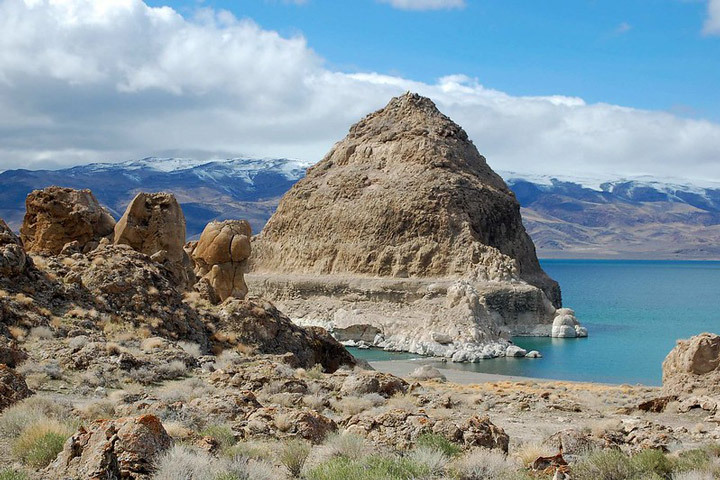

Dense bands of blue-green algae, or cyanobacteria, swirled around the waters of Pyramid Lake in October 2024. This western Nevada lake experiences similar blooms on an almost-yearly basis. The proliferation of single-celled, photosynthetic organisms in autumn 2024 became one of the most active bloom events seen in years, according to the Pyramid Lake Paiute Tribe Water Quality Program.
The OLI-2 (Operational Land Imager-2) on the Landsat 9 satellite acquired this natural-color image of the bloom on October 8. One day earlier, the Pyramid Lake Paiute Tribe noted that bloom activity was increasing with water conditions favorable for phytoplankton growth, and the lake water was becoming more opaque in some areas. The bloom continued to expand and discolor the water and may have reached its peak around October 15.
A San Francisco Estuary Institute water quality analysis tool showed that levels of sunlight-harvesting chlorophyll-a and an index estimating cyanobacteria concentration both increased between late September and mid-October. These estimates were derived from an ocean color instrument on the European Space Agency’s Sentinel-3 satellite mission with additional processing by the NOAA National Ocean Service.
According to the Pyramid Lake Paiute Tribe, the autumn 2024 bloom contains the cyanobacteria Nodularia spumigena. Nodularia species are nitrogen fixers common in warm, brackish waterbodies. Recurring Nodularia blooms have been documented for decades in Pyramid Lake, including by Landsat satellite observations and in situ measurements.
Nodularia spumigena has the potential to produce toxins such as nodularin, which can affect the liver and cause other adverse health effects in humans. It may also bioaccumulate in aquatic vertebrates and invertebrates. The tribe reported on October 15 that the bloom was releasing toxins and advised people to avoid contact with the water. It may take two to three weeks from the peak of the bloom for water conditions to return to normal, they said.

Pyramid Lake is located in a remote desert area about 35 miles (56 kilometers) northeast of Reno, Nevada, and is fed primarily by the Truckee River. It is a remnant of the ancient and much larger Lake Lahontan, which formed during the last ice age when the regional climate was significantly cooler and wetter. Scientists believe Nodularia was part of the ecosystem going back to the days of Lake Lahontan.
Today, Pyramid Lake may be best known for its striking calcium carbonate formations known as tufas, as well as its fishery. The waterbody is the only remaining habitat for the endangered cui-ui (Chasmistes cuius), a large, long-lived suckerfish. It was also home to the world record-setting Lahontan cutthroat trout (Oncorhynchus clarkii henshawi), a 41-pounder landed in 1925.
NASA Earth Observatory image by Wanmei Liang, using Landsat data from the U.S. Geological Survey. Photo by Luke H. Gordon. Story by Lindsey Doermann.